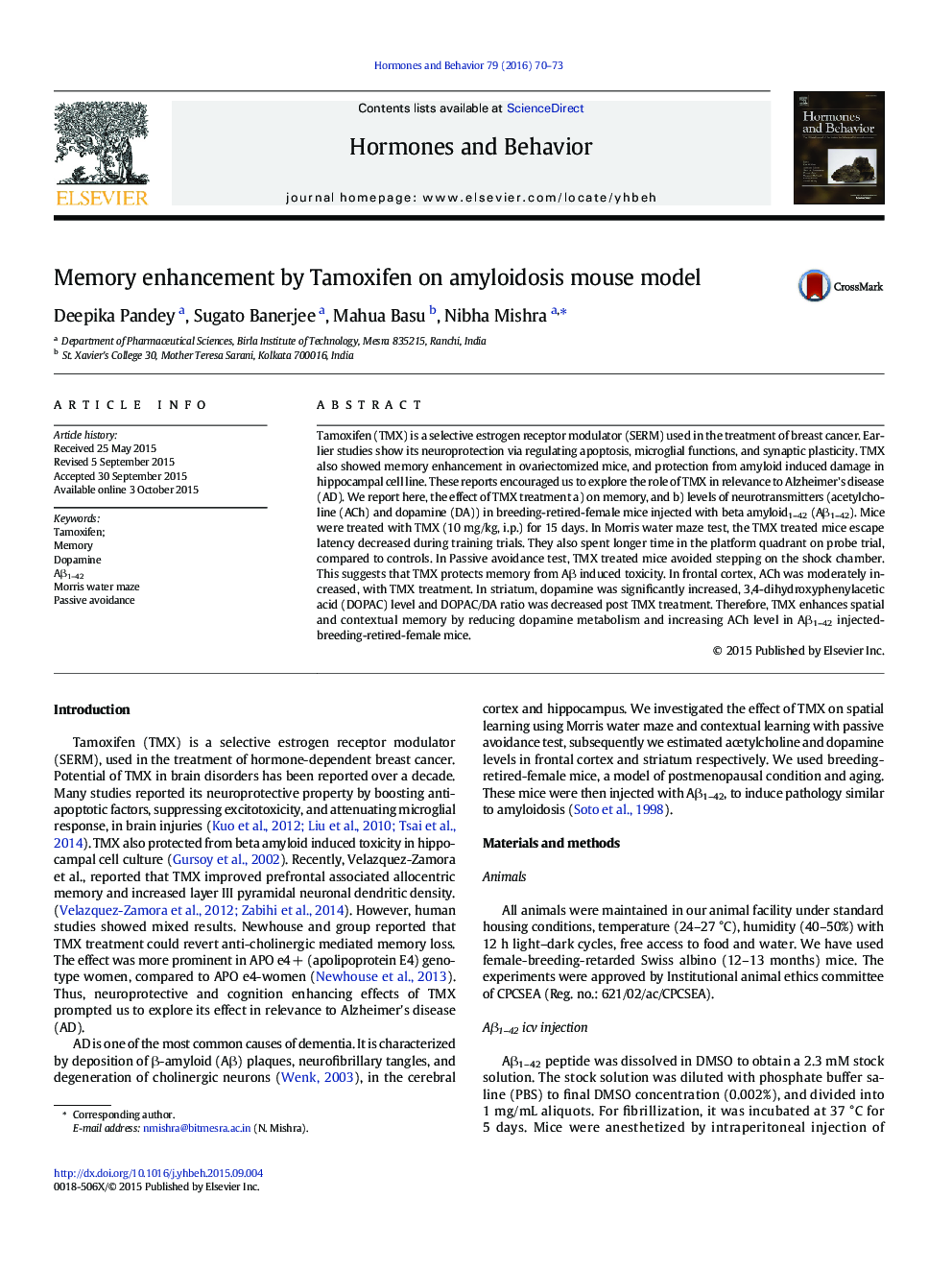| Article ID | Journal | Published Year | Pages | File Type |
|---|---|---|---|---|
| 323048 | Hormones and Behavior | 2016 | 4 Pages |
•Tamoxifen protected contextual memory and spatial memory.•It moderately increased acetylcholine in frontal cortex.•It significantly decreased dopamine metabolism in striatum.
Tamoxifen (TMX) is a selective estrogen receptor modulator (SERM) used in the treatment of breast cancer. Earlier studies show its neuroprotection via regulating apoptosis, microglial functions, and synaptic plasticity. TMX also showed memory enhancement in ovariectomized mice, and protection from amyloid induced damage in hippocampal cell line. These reports encouraged us to explore the role of TMX in relevance to Alzheimer's disease (AD). We report here, the effect of TMX treatment a) on memory, and b) levels of neurotransmitters (acetylcholine (ACh) and dopamine (DA)) in breeding-retired-female mice injected with beta amyloid1–42 (Aβ1–42). Mice were treated with TMX (10 mg/kg, i.p.) for 15 days. In Morris water maze test, the TMX treated mice escape latency decreased during training trials. They also spent longer time in the platform quadrant on probe trial, compared to controls. In Passive avoidance test, TMX treated mice avoided stepping on the shock chamber. This suggests that TMX protects memory from Aβ induced toxicity. In frontal cortex, ACh was moderately increased, with TMX treatment. In striatum, dopamine was significantly increased, 3,4-dihydroxyphenylacetic acid (DOPAC) level and DOPAC/DA ratio was decreased post TMX treatment. Therefore, TMX enhances spatial and contextual memory by reducing dopamine metabolism and increasing ACh level in Aβ1–42 injected-breeding-retired-female mice.
Graphical abstractFigure optionsDownload full-size imageDownload high-quality image (141 K)Download as PowerPoint slide
